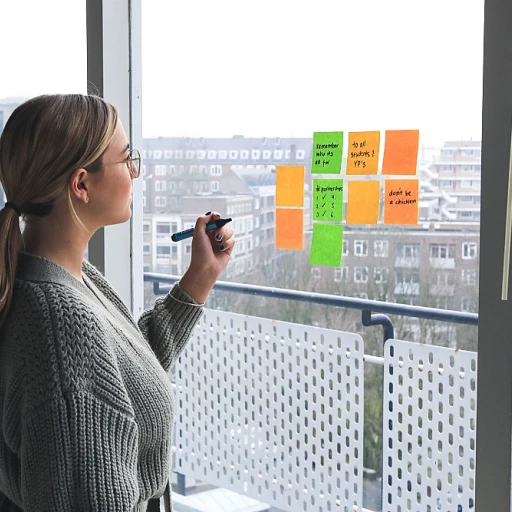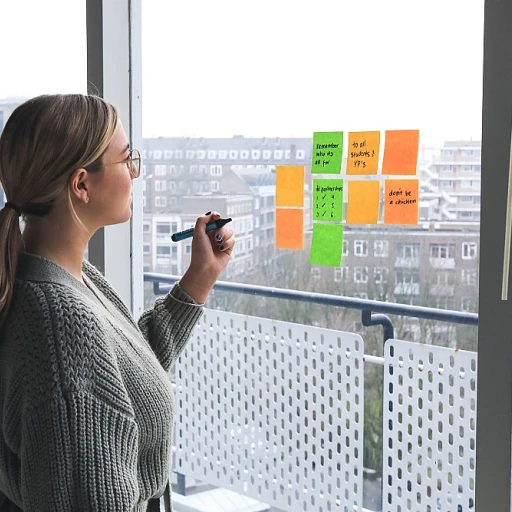
Understanding Bottom-Up Forecasting
In the realm of human resources, adopting a bottom-up forecasting approach can be transformative for a business. While traditionally companies have relied on top-down methods, bottom-up forecasting offers a different perspective, providing detailed insights by aggregating data from the ground level up. This approach draws from actual sales data, projections, and pipeline information from sales teams, leading to more accurate sales forecasts.
How Bottom-Up Forecasting Works
Unlike top forecasting which starts with high-level business goals and works downwards, bottom forecasting begins at the base. This involves collecting detailed data from various departments, such as sales records and performance metrics, to craft a comprehensive forecast. Sales reps play a critical role, as their daily interactions and insights feed into the broader forecasting process.
The bottom-up approach helps in capturing nuances that top forecasts might miss. Companies benefit from more precise and tailored sales planning, as it aligns closely with actual market conditions. With historical data playing a pivotal role, businesses can identify patterns and predict trends, enhancing forecast accuracy.
Why This Matters
Employing bottom-up forecasting allows organizations to leverage a data-driven strategy to align their workforce planning with overall company goals. It ensures that forecasts are not simply numbers, but reflect the ground realities. By acknowledging sales team inputs, businesses can better anticipate growth and revenue projections, improving sales performance.
For those keen on learning more about innovative strategies like using scenario analysis for product innovation, exploring similar frameworks can reveal further potential for aligning forecasts with business strategy. In sum, bottom-up forecasting is not just about more data, it's about smarter data use for a more accurate and realistic business forecast.
Aligning Workforce Planning with Organizational Goals
Connecting Workforce Strategies with Business Objectives
In today's dynamic market, aligning workforce planning with organizational goals is paramount. A bottom-up approach in forecasting helps bridge this gap by providing detailed data insights drawn from various departments. Sales teams, in particular, play a crucial role in supplying accurate sales data that can inform the overall growth strategy of a company.
By leveraging historical data, businesses can construct detailed forecasts that not only align with current market trends but also anticipate future performance. For instance, analyzing historical performance of sales reps helps predict future sales, enabling more accurate sales forecasts. This process drives a more granular understanding of your sales pipeline and enables predictive sales planning.
Moreover, aligning business objectives with workforce strategies involves recognizing the revenue projections at the company level and how they translate into specific workforce needs. Through a meticulous forecasting process, which includes both top-down and bottom forecasting methods, companies ensure they are prepared to meet market demands.
This alignment not only enhances the accuracy of sales forecasting but also fosters coherence between workforce planning and business strategies. This results in a synchronized approach where employee capacity and organizational goals move in tandem, guaranteeing that the company is poised for sustainable growth and increased revenue.
To explore more about implementing effective HR strategies that benefit your business, check out optimizing pricing tools for small enterprises.
Benefits of Bottom-Up Forecasting in HR
Advantages of Utilizing Bottom-Up Forecasting in HR
Bottom-up forecasting offers a comprehensive approach to HR strategy and workforce planning, providing numerous advantages to organizations. This methodology stands out by utilizing data collected from various levels within the company, making it an effective tool for creating accurate forecasts and guiding business decisions.
1. Data-Driven Insights: Bottom-up forecasting leverages detailed data obtained from employees across different departments. This sales data and historical information provide a solid foundation for projections, ensuring that the company aligns its HR and sales strategies with factual market conditions and performance trends.
2. Accurate Projections: By gathering input from the bottom up, organizations can create more precise forecasts. This approach minimizes the risk of overestimation or underestimation often associated with top-down methods. As a result, businesses can better anticipate revenue, hiring needs, and sales pipeline requirements.
3. Enhanced Engagement of Sales Teams: Engaging employees in the forecasting process fosters a sense of ownership and accountability. Sales reps and leaders contributing bottom-up forecasts tend to be more committed to achieving the targets, thereby enhancing overall sales performance and improving forecast accuracy.
4. Improved Planning and Decision-Making: With access to accurate and well-grounded forecasts, HR departments can wage more effective sales planning and workforce decisions. Aligning forecasts with comprehensive business strategies maximizes efficiency and growth potential.
This bottom forecasting approach can help companies develop a robust HR strategy, aligning workforce planning with organizational goals. In a world where data-driven decisions lead to competitive advantages, understanding the benefits of bottom-up forecasting is crucial. Discover how to maximize efficiency by leveraging detailed workforce metrics to enhance your company’s performance.
Challenges and Solutions in Implementing Bottom-Up Forecasting
Addressing Implementation Hurdles and Offering Solutions
When embarking on bottom-up forecasting within your business, several challenges may arise. Understanding these hurdles is critical to ensuring smoother integration into the HR strategy and achieving accurate forecasts. Here's a closer look at common obstacles and how you can overcome them:
- Data Collection & Quality: Accurate forecasting relies heavily on high-quality, comprehensive data. HR managers must tap into historical data to inform projections. Enhancing data accuracy and completeness can mitigate this challenge.
- Integration with Existing Processes: The bottom-up approach might initially seem at odds with other existing practices, but aligning it with top-down methods can offer a balanced outlook. Bridging the integration gap can involve using a phased approach where teams begin with smaller pilot projects.
- Resistance to Change: Implementing a new forecasting method may meet resistance from teams comfortable with traditional approaches. Training and clear communication about the benefits, like improved sales forecasting and revenue projections, can help ease this transition.
- Resource Allocation: Bottom-up forecasting is resource-intensive, as it requires time from sales teams and other departments for data collection and analysis. By clearly outlining potential growth and performance improvements, securing buy-in for necessary resources becomes easier.
- Data Interpretation Challenges: The process demands interpretation skills to ensure data-driven insights translate into actionable business strategies. Offering workshops on data analysis and interpretation can bolster team capabilities.
Utilizing these solutions can pave the way for successful integration of bottom-up forecasting, enhancing sales planning, boosting forecast accuracy, and ultimately contributing to the overall growth of the company. By addressing these challenges head-on, companies can unlock the full potential of detailed data-driven strategies.
Case Studies: Successful Bottom-Up Forecasting in Action
Real-World Examples of Bottom-Up Forecasting
Bottom-up forecasting has been successfully implemented by various companies across different industries. These real-world examples highlight how this approach can enhance sales performance and drive business growth.
Tech Company Boosts Revenue with Data-Driven Insights
A leading tech company adopted bottom-up forecasting to improve its sales planning and revenue projections. By leveraging detailed sales data and historical data, the company was able to create more accurate forecasts. This data-driven approach allowed sales leaders to identify trends and adjust strategies accordingly, resulting in a significant boost in revenue.
Retailer Aligns Workforce with Market Demands
A major retailer utilized bottom-up forecasting to align its workforce planning with market demands. By analyzing sales data and market trends, the company could forecast staffing needs more accurately. This approach not only optimized their workforce but also improved overall sales performance by ensuring that the right number of sales reps were available during peak times.
Manufacturing Firm Enhances Forecast Accuracy
A manufacturing firm faced challenges with its traditional top-down forecasting methods. By switching to a bottom-up approach, the company improved its forecast accuracy significantly. The process involved gathering input from various departments, including sales teams, to create a comprehensive forecast. This method allowed the firm to better anticipate market fluctuations and adjust its production pipeline accordingly.
Service Provider Streamlines Forecasting Process
A service provider streamlined its forecasting process by implementing bottom-up forecasting methods. By involving sales teams in the forecasting process, the company gained valuable insights into customer demands and market conditions. This collaborative approach led to more accurate sales forecasts and improved the company's ability to meet client needs efficiently.
These case studies demonstrate the effectiveness of bottom-up forecasting in various business contexts. By focusing on detailed data and involving key stakeholders, companies can enhance their forecasting accuracy and drive growth.
Steps to Implement Bottom-Up Forecasting in Your Organization
Practical Steps to Integrate Bottom-Up Forecasting
Implementing bottom-up forecasting in your organization requires a strategic approach that involves meticulous planning and seamless execution. By following these practical steps, you can align this method with your broader HR strategy, ensuring it complements and enhances the existing processes.
1. Preliminary Assessment
Begin with a thorough analysis of your current forecasting methods and identify gaps where bottom-up forecasting might be beneficial. Assess the quality of your existing sales data and historical data to evaluate if it supports detailed predictions. This phase sets the foundation for a successful implementation.
2. Stakeholder Engagement
Involving key stakeholders, including sales leaders and HR managers, is crucial. Conduct workshops to educate your team on the benefits and differences between top and bottom forecasting approaches. Encourage active participation to ensure alignment with overall sales planning and organizational growth objectives.
3. Data Collection and Integration
Gathering detailed data from sales reps and other relevant departments is essential for accurate projections. Implement systems that facilitate data-driven decisions and improve forecast accuracy. Emphasize the integration of historical data to refine the forecasting process over time.
4. Designing the Forecasting Framework
Create a framework that accommodates both bottom-up and top-down forecasts, allowing a comprehensive analysis of market and company performance. This holistic approach ensures that sales forecasts align with the company’s revenue targets and strategic goals.
5. Pilot and Refine
Start with a pilot program to test the new approach. Use a small segment or department to trial the bottom forecasting method. Collect feedback, measure performance, and make necessary adjustments. This iterative process is crucial for refining forecasts to achieve better accuracy.
6. Continuous Monitoring and Adjustment
Once implemented, continuous monitoring is key to maintaining effective bottom-up forecasting. Regularly review forecasts against actual sales performance and make adjustments where needed. This ongoing evaluation ensures your forecasting method remains aligned with evolving business and market conditions.
By sticking to these structured steps, your organization can enhance its HR strategy with a robust bottom-up forecasting approach, ultimately supporting more accurate sales data, efficient sales team management, and improved business outcomes.












